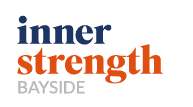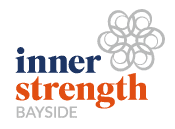Headaches? Does your Jaw click, lock or catch?…. might be your TMJ. By Lara Syme
TMJ is an abbreviation for Temporomandibular Joint, or the jaw joint. There are two, one in front of each ear. These joints move each time we chew, talk or swallow. They are probably the most used joints in the body (used far more by some of us than others!). The TMJs have a disc between the bones, like the ones between your back bones; this disc also helps with pressure distribution in the joint.
Common symptoms of TMJ dysfunction:
Clicking is the most common symptom of TMJ. This clicking sound may be so loud that it can be heard by others when you chew. This clicking can be produced by the disc being caught between the two bones of the TMJ.
Catching or Locking of the TMJs may feel like a catching of the lower jaw as it opens. When the TMJ Disc goes out of place, the bones and disc do not fit together properly which can result in locking or catching.
Fullness in the ears is often felt, due to the close relationship of the TMJs and the ears.
Headaches located in the temples and back of the head can come from the TMJs. Clenching and grinding of the teeth produce muscle tightness which can cause headache pain. A displaced disc in the TMJ may cause pain in the temples that is so severe that it is often confused with a migraine.
Teeth and Facial pain may actually be referred pain from the joint, muscles and disc of the TMJs.
Physiotherapy can help people suffering with TMJ problems. We focus on relieving muscle spasm and addressing imbalances in the jaw and neck joints. Often, massage, joint mobilisation, exercises and alterations in life-style may be all that is needed to cure jaw pain. Physiotherapists are able to determine if further interventions like wearing a night splint is necessary and we can refer you to TMJ specialist doctors if required.
Ask our Physiotherapists at InnerStrength of Bayside about treatment options and further advice.



